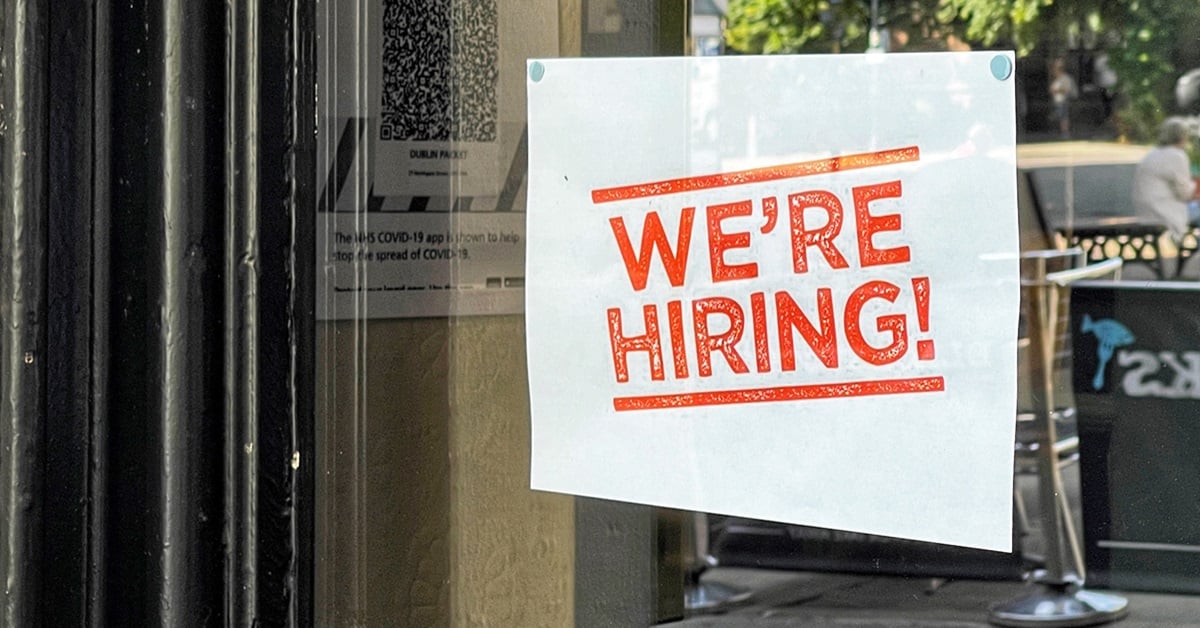Restaurants are complex businesses with many different facets to consider. Taking a holistic approach to improving restaurant operations across the board can seem like a Herculean task.
That is why we have assembled our tips to help you improve your restaurant operations across the board. From front of house to back of house to the nitty-gritty of management, we have the information you need to have your venue operating more smoothly than ever.
What are restaurant operations?
The term "restaurant operations" can mean many different things within the hospitality industry, depending on who you ask. It is most useful to think of restaurant operations as the fundamental tasks that go into the operation of a restaurant. Restaurant operations management refers to how these operations are handled.
Restaurant operations will also refer to different things depending on which section of the venue is being referred to.
- Front of house: When it comes to the front-of-house of a restaurant, conversations about restaurant operations will likely include customer service, table management and the use of POS systems.
- Back of house: For the back of house, restaurant operations will include inventory management, cooking procedures and food safety.
- Management: For owners and managers of hospitality venues, restaurant operations include all the top-level work that makes your business tick. This includes financial management, purchase of materials, rostering, development of procedures and much more.
Benefits of improving restaurant operations
There is no shortage of ways in which your business benefits from improved restaurant operations management. Here are just a few of the top-level advantages your business can enjoy when you set out to improve restaurant operations.
- Increased sales and profit margins: Streamlining and improving the operations of your restaurant can help boost sales and profit margins in many ways. From improving customer service protocols to better inventory management, steps taken to improve restaurant operations are likely to have a significant impact on your bottom line.
- Greater employee morale: Poor management and processes can be a major source of discontent for employees. Highly optimised restaurant operations will make life far easier for them. They will also feel greater pride as your restaurant becomes better across the board. This also helps your venue to attract better staff in the future, as your venue becomes a desired workplace.
- Greater customer satisfaction: It's pretty simple; a better, more well-run restaurant makes for happier customers. And happier customers are great for your venue in myriad ways. Returning visitors tend to be bigger spenders than first-timers, and pleased diners will help to spread the word about your business through channels such as online reviews.
10 tips to improve restaurant operations
Now that you have a greater understanding of restaurant operations and why you should be concerned with making them better than ever, check out 10 tips to get your venue operating at a high level at all times.
1. Compliance is key
It is impossible to overstate the importance of complying with legal regulations across all facets of your restaurant. Complying with regulations ensures that your staff and your customers can experience safety and fairness within your restaurant. In addition, failing to comply with these laws can result in major fines and significant damage to your business' reputation.
Restaurant owners and managers should have a comprehensive understanding of the relevant regulations in all areas of their venue. Some particular fields you may want to hone in on include:
- Labour laws: Jurisdictions around the world have rules in place that aim to protect the rights of workers. Be aware of rules around payroll, tax, working conditions for minors and more.
- Food health and safety standards: There are strict laws around the world with regard to food safety. Some areas of interest include personal hygiene, food handling and pest control.
- Alcohol service: Most jurisdictions require your venue to possess particular licences to serve alcohol. In addition, there are further rules regarding the service of alcohol, including which members of staff may serve alcohol (generally a qualification is required) and which customers may receive it (depending on their age or current level of intoxication).
Once you have a strong understanding of legal regulations within these areas, you can work them into your standard operating procedures (SOPs).
2. Implement standard operating procedures
If your restaurant is not already making use of standard operating procedures (SOPs), now is the time to start.
SOPs may take the form of an employee handbook, to be studied upon induction and referred back to. Simpler procedures can also be displayed on walls for ease of reference.
You can build SOPs for any area in your business in which they may be useful. Consider implementing SOPs for the following:
- Food preparation and storage
- Food safety standards
- Customer interactions
- Dress codes
- Hygiene guidelines
- Inventory management
A good SOP is extremely clear and only as long as it needs to be. Take great care in their creation and be sure to get input from the staff members who will actually be affected by each SOP.
3.Train your team
A business is nothing without its staff, and your restaurant is no different. Employee training is therefore key to improving restaurant operations.
With your new SOPs in place, take some time to run over them with your staff to maximise their effectiveness. You might also implement more general training for your staff. Consider the services of professional trainers to come in and provide a new perspective on staff operations.
In addition to external training, do not neglect the expertise that is already in the building. Set aside designated times for your more senior staff members to share their knowledge with more junior employees.
4. Reconfigure your rosters
Optimised rosters can be tricky to create, but once in place, they can go a long way to helping your restaurant operations. Once you investigate your labour cost ratio, you may discover that you are simply spending too much money on your staff. Keep in mind that an optimal labour cost ratio for restaurants is typically considered to be in the range of 20-35%.
If your ratio is well above this figure, your rostering may be one way to drive costs down. Analyse your front of house operations. Do you find that there are often staff that do not have anything to do?
One way to help ensure you have an appropriate amount of staff on the floor is by utilising a rotating roster. Rotating rosters are more flexible and adaptable, allowing you to more easily put less staff on shift when necessary. They also make it easier to quickly fill shifts when necessary.
5. Get serious about your finances
The idea of comprehensively analysing the financial health of your restaurant is a daunting one, but it is absolutely necessary for the operation of a successful venue.
Some of the key metrics you should become aware of include:
- Sales: Sales is the total revenue generated by the fundamental functions of your restaurant, from menu items to gift cards.
- Cost of goods sold: Cost of goods sold refers to the money spent on food, drinks and everything else that goes into serving your customers. It is the ultimate counterpoint to sales and helps to indicate how profitable your venue is.
- Food cost percentage: Food cost percentage can be calculated in a number of different ways (as covered in our comprehensive guide to food cost percentage), but is most commonly understood as total food costs divided by total food sales.
- Labour cost ratio: Your labour cost ratio is your total labour costs over a given time period divided by your gross profit and multiplied by 100. It indicates how much money you are spending on labour
- Profit margins: You can use a variety of calculations to discover your gross profit margin, net profit margin and operating profit margin. These provide a holistic metric to help you understand how profitable your business is.
For more, check out our complete guide to KPIs for restaurants.
6. Utilise technology
As technology continues to evolve, new opportunities to leverage it for use in your business arise. From automated phone booking services to electronic POS systems, there's no shortage of ways technology can help your business to thrive.
If you don’t know where to begin when implementing technology in your business, ResDiary is the perfect starting point. It offers high-calibre reservation software, simplified inventory management and excellent data collection to make your financial reporting easier. Book a demo to start to take advantage of these opportunities and more.
If you really want to stay on the cutting edge, why not incorporate the AI revolution into your venue? AI chatbots such as ChatGPT can be used in your restaurant, to help with tasks such as:
- Creating a business plan: Objective, technical writing is the perfect use for AI tools.
- Generating menu ideas: AI chatbots can be an excellent addition to creative ideation processes.
- Unique marketing ideas: AI tools are trained on expansive datasets, allowing them to quickly synthesise a wealth of marketing knowledge into succinct suggestions for you to take advantage of.
7. Scrutinise inventory
Inventory costs are a hidden killer in the restaurant industry. Chances are, there are systems to be optimised and money to be saved when it comes to your food costs.
When it comes to ordering inventory, consider options such as wholesale buying to drive down costs. Implement an SOP for inventory ordering to ensure this critical part of restaurant operations goes as smoothly as possible.
Once your inventory is in the door, you need to make sure it is used properly. Implement appropriate systems such as First In, First Out to ensure as much stock as possible is being correctly used.
Finally, you need to address the issue of food waste. Any steps you can take to reduce food waste in your venue can save money as well as improve the sustainability of your restaurant business.
Track what the major sources of food waste are in your venue. For example, if most waste is coming from customer's plates, reconsider your portion sizes. If waste is being generated by unused stock, take another look at your inventory management systems.
8. Optimise your use of space
Rent is an infamous bugbear for restaurants around the globe. Considering how much money you are spending on your physical venue, it is crucially important that you maximise its usage.
This applies both to the front of house and the back of house in your restaurant. For the front of house, you must aim to fit as much seating in your venue as possible without compromising the comfort of your guests. Ensure tables are arranged in a manner that allows for easy passage for your customers and your staff.
In the back of house, work closely with your team of chefs to design your kitchen for maximum cooking efficiency. Don't forget to maximise vertical space in the kitchen.
You should also consider creating "hot" and "cool" zones in your kitchen. These temperature zones will make your appliances more efficient and save you money on utility costs.
For more information on space optimisation, see our comprehensive floor plan ebook with templates for a wide array of restaurant types.
9. Focus on consistent excellence
When you visit an outstanding restaurant, what stands out to you? It might be brilliant table service or the thrill of seeing identical plates of food sent out on the pass. What it really comes down to is consistency.
Set a benchmark throughout your restaurant that each customer will be greeted with a smile and all their needs attended to. For the back of house, focus on elevating each plate of food in taste and appearance.
Having a larger, ambitious vision for your team to work towards can make it easier to achieve your goals and achieve smooth restaurant operation.
10. Don't forget the extras
The operations management of your restaurant extends well beyond the food and drinks served to customers. Dedicate some time to thinking about the other operations of your restaurant and how they can be improved.
Some areas which might apply for your venue include:
- Marketing: Unfortunately, you cannot set and forget your marketing efforts. Whether you utilise search engine optimisation, social media or partnerships with local businesses, you must consistently revisit your restaurant's marketing to ensure its long-term success.
- Loyalty programs: Loyalty programs can be an excellent way to drive repeat business, and are well worth implementing in your restaurant.
- Additional offerings: From gift vouchers to take-home jars of your famous mustard sauce, it is an excellent idea to sell items at your restaurant beyond what is on the menu. If you are not already doing this, consider doing so. If you have already taken this step, be sure to do your due diligence and ensure you are doing so in an optimised, profitable manner.
Improve your restaurant operations with ResDiary
Performing a holistic review and optimisation of your restaurant's operations may seem like a major undertaking, but there are plenty of steps you can take to make things easier. Investing in a table management system like ResDiary can help in myriad ways.
A digital reservation diary helps to make bookings a breeze, as does ResPhone, an automated telephone service. We also offer more than 60 integrations from property management systems to EPOS solutions.
Book a demo today and uncover the many ways ResDiary can boost your restaurant operations.
.jpg)


